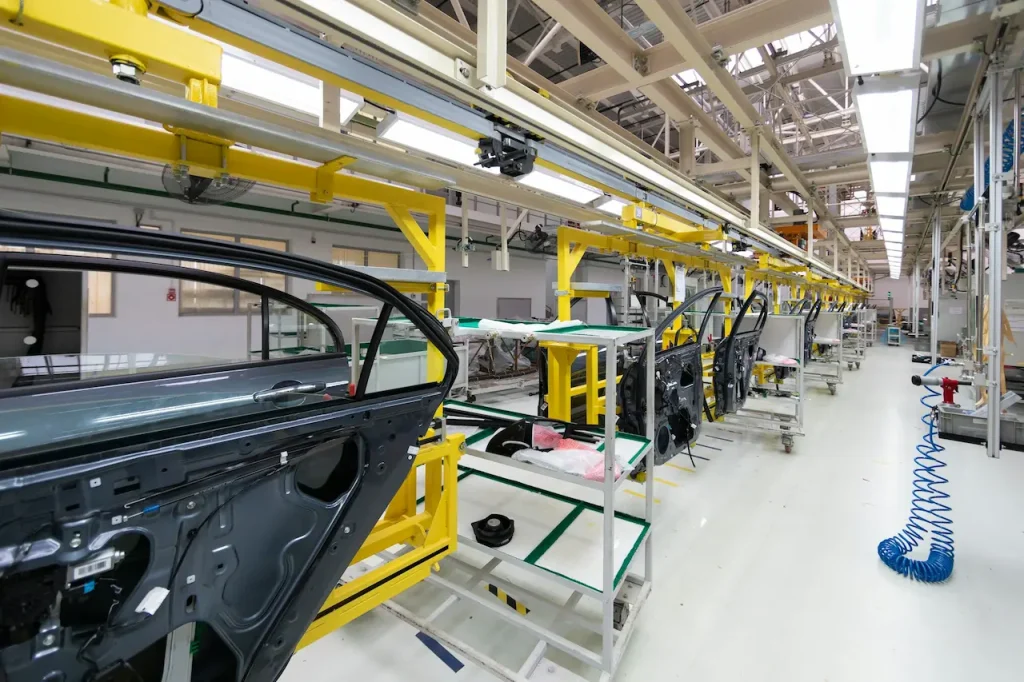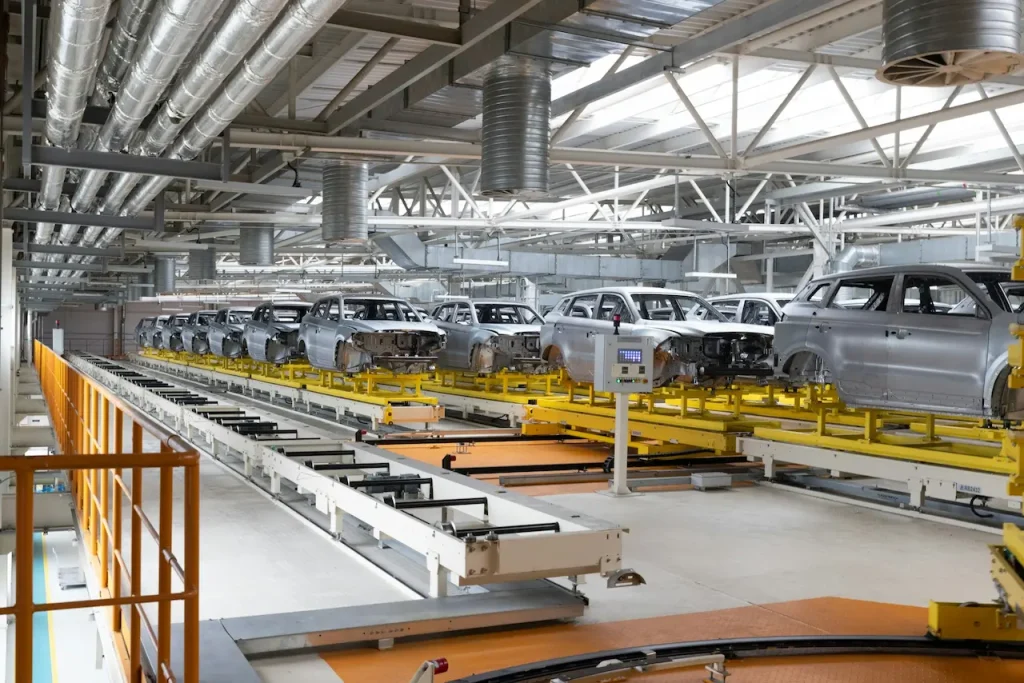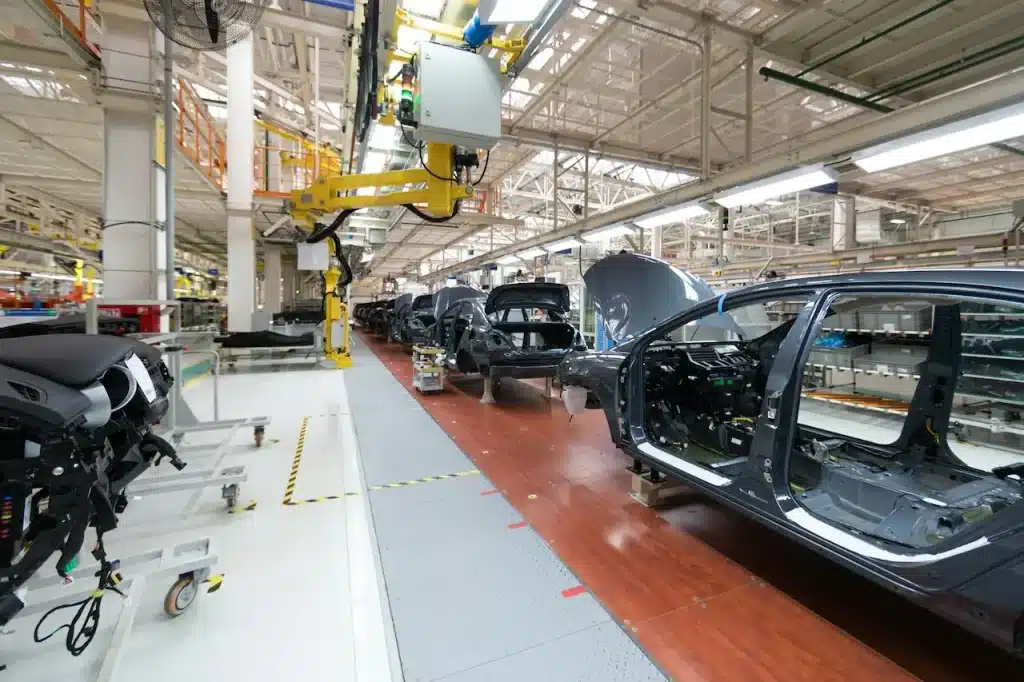Megafactories Toyota Australia
Megafactories - Inside Toyota Australia's Hybrid Revolution
Under the corrugated skyline in Melbourne’s industrial West, where eucalyptus sways beyond chain-link fencing and forklifts buzz like worker bees, is something truly extraordinary taking shape. The countdown has begun. Toyota Australia is set to unveil its latest hybrid Camry in a matter of weeks. This vehicle was not born in Tokyo or Detroit, but here in Australia, the heartbeat of Australia’s mechanical industry.
It’s not just a launch.
It’s an important moment in history.
This is a story about Australian innovation and global vision. A local megafactory is also at full speed.
Welcome to Altona, where steel meets precision
The journey begins at Altona in Melbourne’s Western Corridor, a suburban area where factories and warehouses dominate the landscape. It was here, in a 70-hectare area near Port Phillip Bay, that Toyota Australia operated one of Australia’s most advanced and largest vehicle manufacturing facilities.
It’s not just a place of work, it’s an organism that lives. Inside, the machines hiss, clank and spark, while robotic arms move with purpose. Steel is transformed into something smooth and almost lifelike.

The plant is in overdrive during the weeks before the launch date of the new hybrid Camry.
Liam, who has been a leader of the production team for more than a decade and worked on the floor, says, “Everything is important now.” “The preparation, the precision, and the people — it’s all going to have to come together perfectly.”
There’s an excitement in the air, from the press shop, where raw steel sheets are stamped, to the final assembly lines, where the cars roll out, complete. It’s not just about manufacturing, it’s about heritage, pride and proving Australia’s place in global hybrid stories.
The Global Camry: From Melbourne to the World
Toyota is a Japanese manufacturer, but the Camry has been a globally recognised car for many years. It’s adaptable, reliable and loved from California to Cairo. But Australia? But Australia?
The Camry, which was first introduced in Australia in the 1980s and slowly became the car of choice for taxi drivers, police fleets, families, etc., has been a success. Toyota’s Australian factory produced more than 2,2 million vehicles, including 90,000 hybrid Camrys during its final years.
The hybrid version, a petrol-electric combination that saves fuel without sacrificing performance, was a game-changer. This was designed and built in Australia for Australians, unlike other green technologies imported.
The latest model is not only an evolution in engineering, but also a testimony to what local manufacture can do if aligned with international innovation.
The Final Countdown
The team in Altona is under pressure to meet tight deadlines as the public unveiling of the hybrid Camry nears. Each department, paint, body, weld, assembly, and quality control, is in sync with the other.
Here is where the “megafactory” comes into existence. Imagine: thousands of moving pieces, hundreds of hands and a time frame measured in seconds. At peak production, every 87 seconds, a Camry is produced from one end to the other.
Harmony is not only about speed, it’s also about the harmony of man and machine. Workers in navy uniforms supervise precision robots. Touchscreens buzz in real-time with diagnostics. Just-in-time deliveries of parts are made by local suppliers. The factory is a whirlwind of steel bolts, culminating with the hum of a completed hybrid engine.
The pressure is palpable.
Sarah, who has been inspecting panels and seals in the automotive industry since 2008, says that there is no such thing as a soft launch. This car is not only Toyota’s, but also Australia’s.
Why hybrids matter: Engineering the future
Hybrids may not be new, but they have become the bridge that connects old and new. Hybrids are a great option for Australia, where the charging infrastructure is patchy and the distances are long.
The hybrid Camry represents more than efficiency. It represents Toyota’s dedication to cleaner driving and Australia’s contribution to pushing this vision.
Rahul, an electrical systems engineer, explains that “building a hybrid” is a completely different experience. You’ve got to make sure that two powertrains work together seamlessly. This means more testing and better software.
Altona engineers spent months perfecting the balance of battery and combustion. The result? The result? A car that is faster, quieter, and has lower fuel consumption than its predecessor. It’s also more sensitive to the concerns of modern drivers about environmental issues.

The People Behind the Machines
The heart of Toyota Australia’s megafactory, despite its high-tech wizardry, robotic assembly lines and robots, has always been the people.
You’ll meet welders such as Mick, whose dad also worked at the line. You can learn the history of each bolt from logistics coordinators. You’ll hear about mateships, morning shift coffees and training sessions, as well as team lunches.
Here, there’s pride. They take pride in their work, not just what they create but also how they do it.
Toyota’s famed Kaizen philosophy, continuous improvement, is alive in every detail. Workers are encouraged by Toyota to identify inefficiencies, suggest improvements, and refine processes. Small changes can have a big impact.
Angela, a paint inspector, says that “every car has our fingerprints on it.” “I’m so proud to see the cars on the road, and I think ‘Yeah! I built that.'”
Altona: Geography meets Industry
Some people might find Australia an unlikely place to manufacture cars. It’s far away, expensive and isolated. Altona‘s geography made it the perfect place for this megafactory.
The site is located near Melbourne’s port. Raw materials and parts can be delivered quickly by sea. Finished vehicles can also be sent out efficiently. The site was close to road and rail links, which helped distribute Camrys across the country.
Victoria also had a workforce that was highly skilled and adaptable.
Altona was a quiet powerhouse thanks to its mix of talent, infrastructure and transportation. It contributed billions of dollars to Australia’s economy, trained generations and generations of engineers and exported vehicles as far away as New Zealand and Thailand.
A Changing Industry, A Lasting Legacy
Unfortunately, despite all its accomplishments, Toyota Australia’s manufacturing history came to an abrupt end in October 2017 when the Altona factory ceased production because of economic pressures and global consolidation. But the legacy continues.
The final hybrid Camry was rolled out to tears of joy, applause and heartfelt gratitude. Many workers moved into other departments within Toyota Australia, such as sales, distribution and research. Some entered the education system, others skilled trades or completely different industries. They brought with them the level of craftsmanship that was forged out of steel and sweat.
Toyota has a strong and growing presence in Australia. This includes a national parts distributor, hybrid training programs and a global research and development division.
And the Camry? And the Camry?
The Road Ahead: Looking forward
What’s next for Toyota Australia?
Altona is now a part of Toyota’s Centre of Excellence. This facility focuses on environmental innovation, safety research, and training. The grounds have been converted into wetlands to show how industrial land can be returned to nature.
Hybrids and electric vehicles continue to be a hot topic. Toyota’s hybrids, such as the Camry, Corolla and RAV4, continue to be the most popular models in the United States. Hybrid technology is vital, especially in light of the growing focus on climate-conscious transportation and sustainability.
Australia no longer builds the Camry from scratch, but its DNA, its spirit, resilience, adaptability, and excellence live on in each model sold.

Conclusion – More than Just a Car
The energy that once fueled the Altona Megafactory is still buzzing through the national discussion as the new hybrid Camry gets ready for its big unveil.
It wasn’t only a place to build cars. This was a place where ideas were born, where people took great pride in their creations, and where Australia showed it could compete on the global stage of manufacturing.
Every smooth curve in the Camry bodywork, every silent transition from electric to gasoline, and every kilometre driven on the continent has a link to the red-brick factory in Melbourne’s West.
Although the megafactory has slowed down its engines, its impact and story will continue for generations.
It was never about just making cars.
Making something that moved people, both literally and emotionally, was the goal.
It’s an accomplishment worth celebrating.



